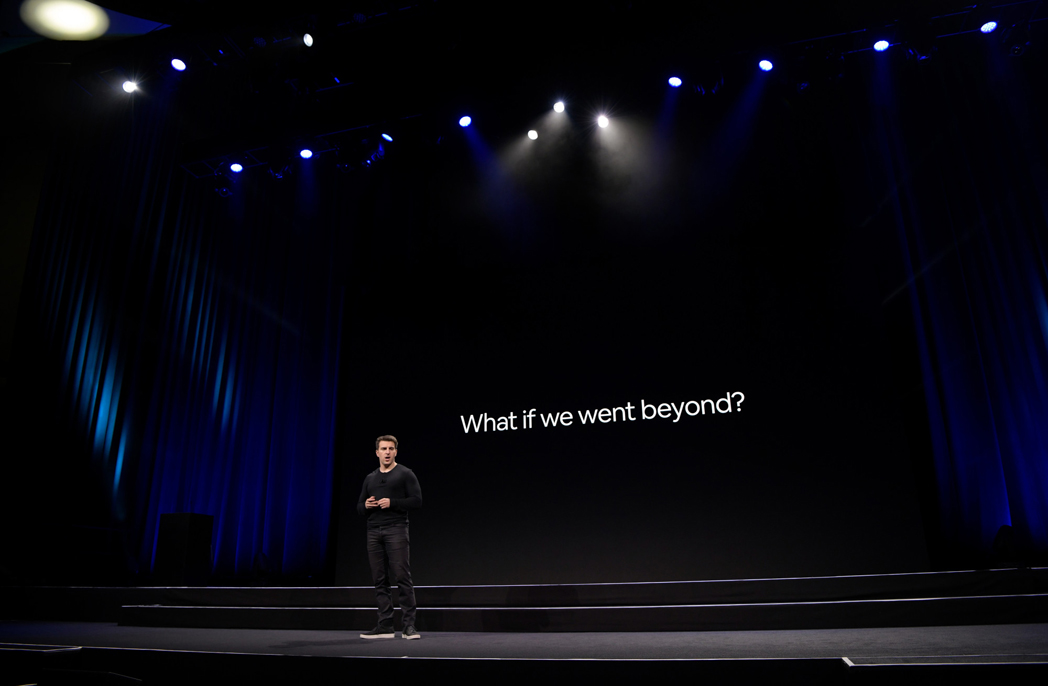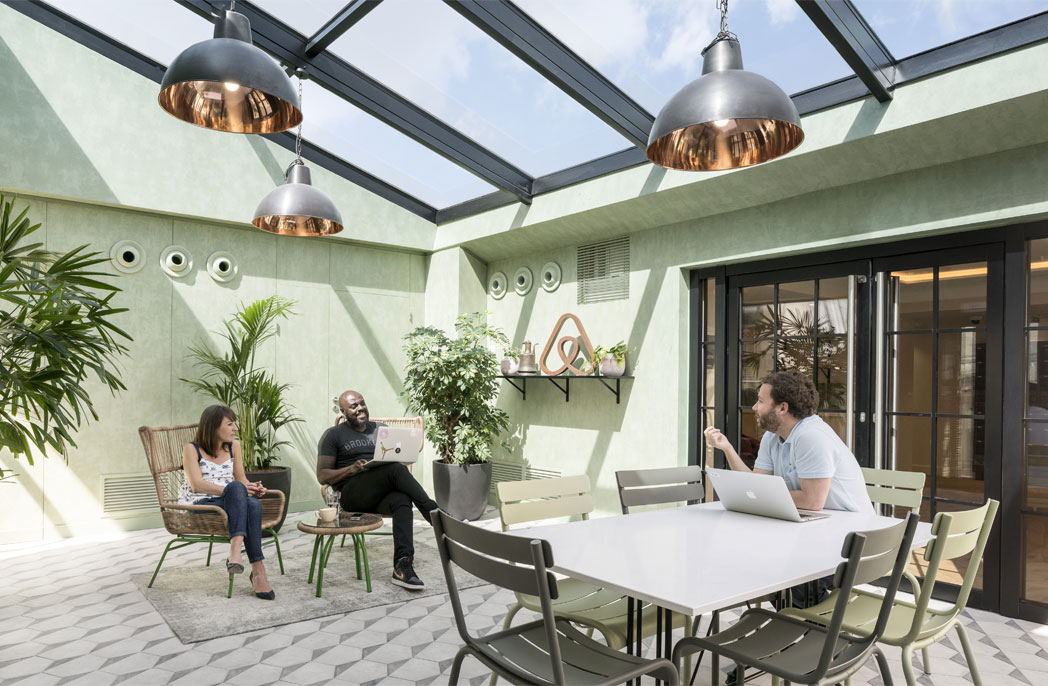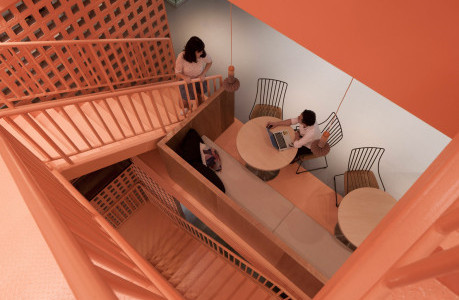
Airbnb’s atypical approach to office design
Airbnb’s atypical approach to office design
Share
There’s not much to dislike about an Airbnb office. Whether it’s the California office that features an LA dive bar filled with vintage items from the 1980s or in Tokyo where there’s a meditation area, complete with tatami mats and phone booths reminiscent of a tea-house, each of the company’s 22 offices aim to reflect the local culture. ADR caught up with Rachael Harvey, executive creative producer, environments design, Airbnb to go behind the scenes of designing an Airbnb office.
ADR: Can you explain the function of the Airbnb Environments team?
Rachael Harvey: We design, or oversee the design, of all Airbnb’s office spaces worldwide. In the past three years, this has included 15-16 workspaces in domestic and international locations such as Seattle, Dublin, Paris, Tokyo, Singapore, and India. The office in Portland rethought the very essence of what a call centre could be and our most recent design at 999 Brannan in San Francisco took an urbanistic approach to organising a population of almost 1,000 into intimate, community-driven neighbourhoods.
Although our primary mission has focused on workplace, we also assist with product development as it relates to the physical world. We remain involved with developing the Airbnb Plus program [a selection of high-quality homes], as well as Airbnb’s partnership with developers such as Niido [a residential rental concept designed to encourage home sharing].
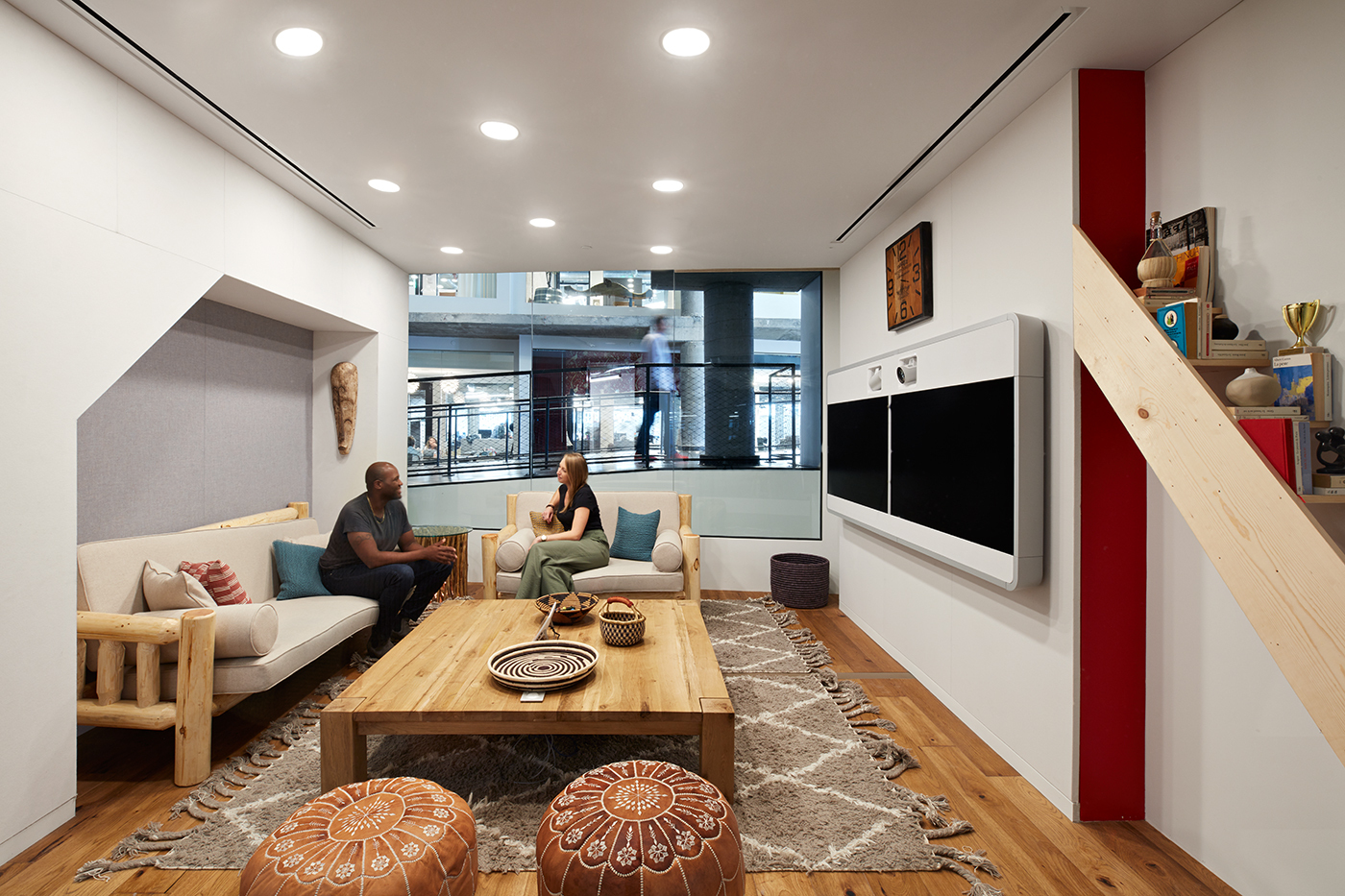
999 Brannan
How are you redesigning the work environment through your designs?
With remote work becoming increasingly accessible, why have a workspace? Why even go to work? This question drives us to make spaces that are fundamentally meaningful to go to. To this end, two concepts often find manifestation in our work:
Belong Anywhere: Not just for our host and guests, we also extend the concept of “Belong Anywhere” to our colleagues. We understand that work happens in a variety of settings, and that people prefer to change their work position and environment several times a day. Instead of being chained to a desk, employees can work in a variety of settings.
We go beyond the traditional desk/conference room/lounge space mix, and also provide a variety of alternative spaces: cafes for individual work or group meetings, talk-free libraries for heads-down work, and stand-up tables that double as personal storage. Un-assigned communal work tables allow sharing for staff who travel frequently or mostly sit in meetings, freeing up typically empty desks.
Seriously fun: Eschewing traditional tech-company tropes like slides and stuffed animal pits, we believe that while the office should feel fun, it should primarily further the business purpose. In our San Francisco office, we built a boat that also houses “duck-ins”, or nooks for individual heads-down work. While visually clever, it also reflects the theme of the floor (Amsterdam), as well as acts as a visual lure, inviting one up from the first floor to investigate what this form is crashing through the wall.
How does Airbnb’s approach to office design differ to other commercial environments that you’ve worked on?
At Airbnb there isn’t the expectation that “work” happens at a desk; everyone is given a laptop as their primary computer during onboarding. These two elements—one technological and the other cultural—provide an opportunity for expressive and dynamic workspace architecture. If an employee doesn’t fear judgement when working reclined on a couch and is given the best tool available to operate that way, they feel a real sense of freedom that makes atypical office space primary instead of extraneous.
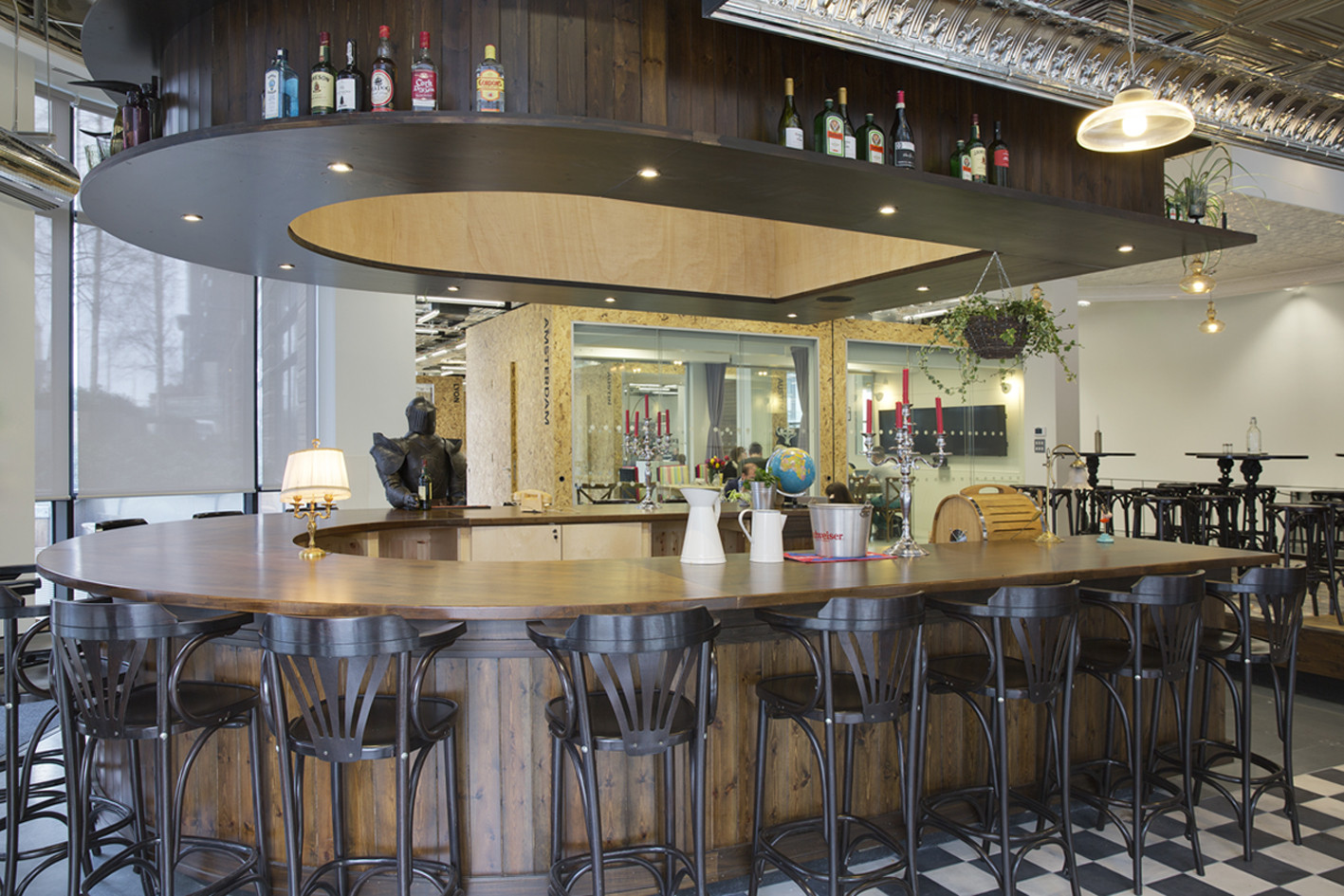
The bar at Airbnb’s Dublin office
Take me through the process of designing an Airbnb office: how does it begin, evolve and come to fruition?
We design offices at a variety of scales, but all start with a basic gathering of local needs and current mis-matches between program and rooms/areas. These needs are balanced against a more universal understanding of what makes for a successful work environment at Airbnb; the ratio of rooms to people, the placement of cafes, the nature of assembly space. Iterating at full scale for three years has given Environments a nuanced understanding of the “user” in a way that is more typically found in industrial not architectural design. It is the primary argument for bringing interior architecture in-house.
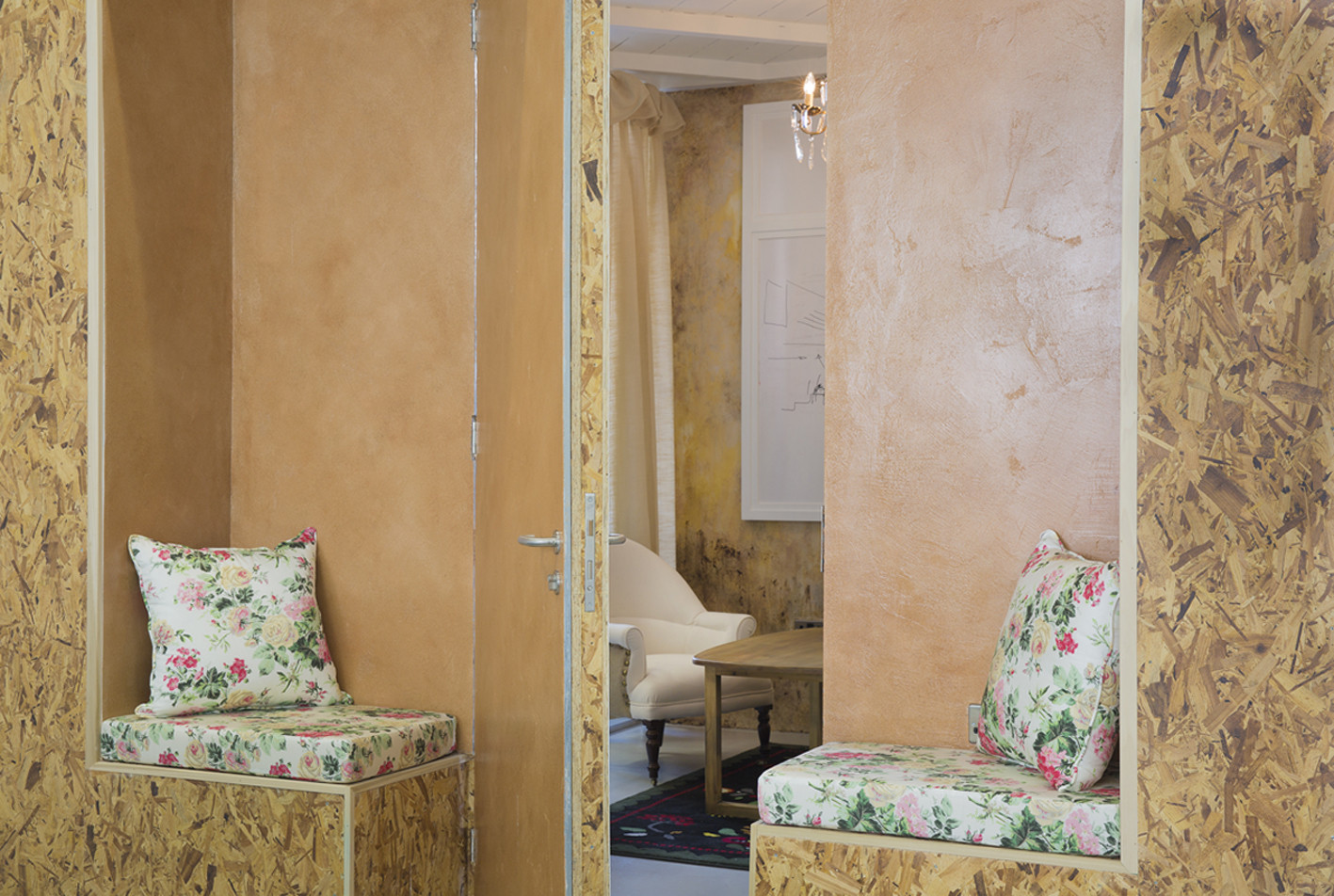
Break out room in Airbnb’s Dublin office
What is most important to Airbnb when it comes to office design?
Cultures typically allocate a large proportion of their resources to their built environment, whether that be Machu Picchu or Disneyland. As such, the built environment can’t help but illustrate the values and hierarchy of the people who built it, often more clearly than any manifesto or set of commandments.
We believe communicating who we are comes not from the application of our logo, but rather something much more experiential. We believe that an environment should not tell you where you work, it should tell you why you work.
This philosophy is at play throughout our work, but the most notable might be in that we imbue the workspace with reminders of our hosts and their spaces. Our conference rooms take inspiration from actual Airbnb listings around the world. This allows our staff to travel the world throughout the day, as well as understand the care and intention with which our hosts curate their spaces. At 999 Brannan, you enter through a gallery-like tunnel of these recreations, affectionately nicknamed ‘Listing Row’. This physicalises the experience of scrolling through the Airbnb app: your body becomes your thumb, scrolling through the homes on Airbnb.
Photography by Ed Reeve and Mariko Reed
You Might also Like
